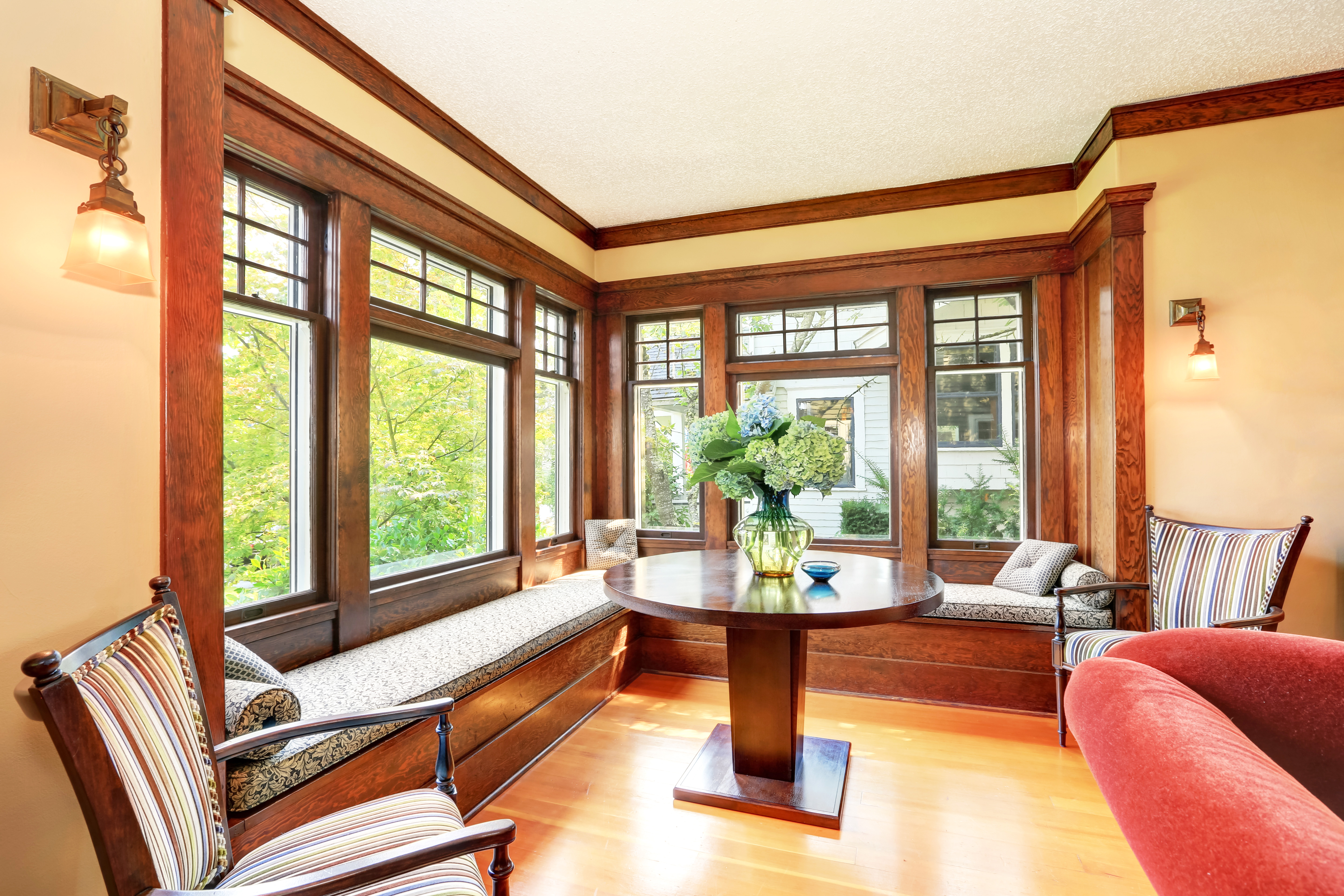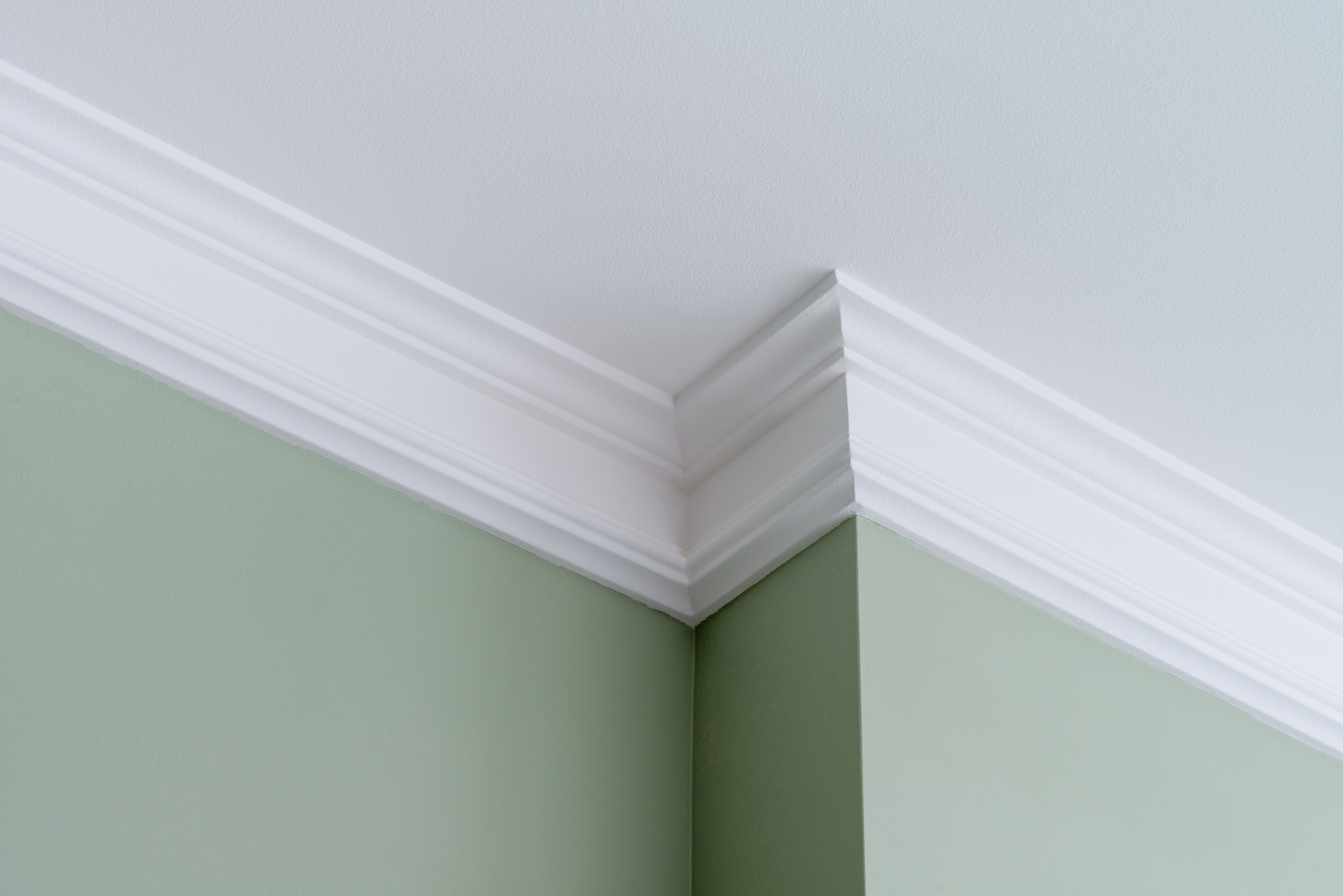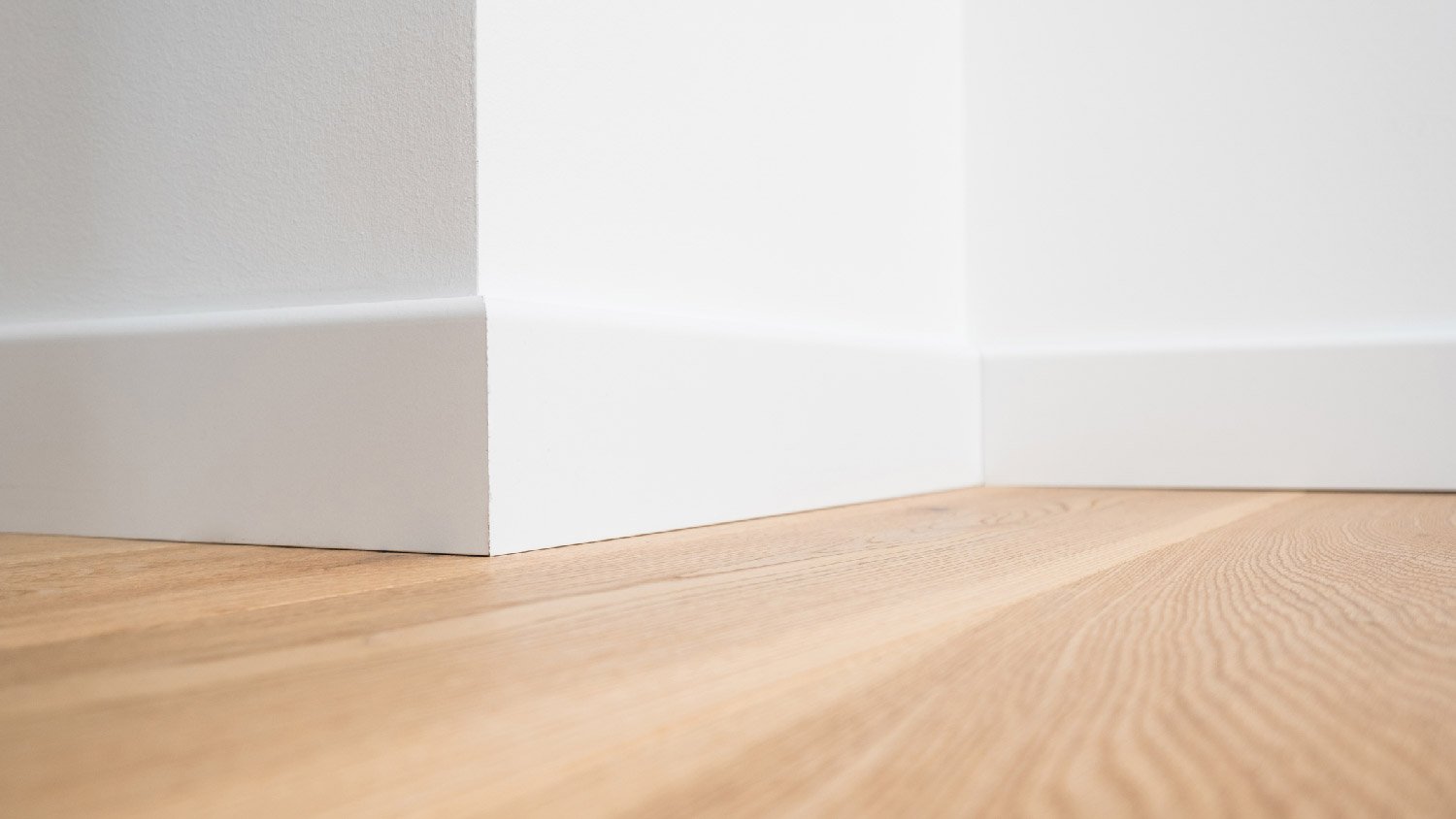
Installing trim can give your home a finished, polished appearance. Learn how much it costs to install trim and what factors affect how much you’ll pay.
A few tools and a free Saturday are all you need to restore your banister


Making a grand entrance down your old oak staircase has a greater impact when your banisters look the part. Imagine a beautiful, elegant, and natural-looking focal point that only gets better with age. Staining a banister is a simple DIY staining project that will restore and modernize your outdated handrail and spindles in just under a day. And while this project requires a bit more prep work than other painting projects, the effort is well worth the final result.
Before beginning any paint project, it's important to protect your stairs and the surrounding walls with a plastic or cloth covering. Extend the drop cloth slightly above and below your banister to protect the floor from stain splatters. Then, secure the edges with painter's tape.
Decide whether you plan to repaint the handrail, balusters—aka spindles—or both. You might also consider mixing and matching the colors of your handrail and spindles to make your banister stand out.
Lastly, staining your banister to last requires a few potent chemical strippers, stains, and sealants, so ventilation is key. Ensure your workspace has ample airflow, and if you have kids or pets, consider keeping them distracted in another room for the duration of this project.

Fight the urge to jump right into the staining process. Your new stain will not grip onto your surface properly unless you remove the old finish first. Some quick prep work can help ensure you aren’t dealing with uneven, peeling, or chipping paint a few months down the road.
Remove the old finish using a chemical stripper or by direct sanding. Whichever you choose, grab your safety gloves, goggles, and a mask for this step.
This method removes the varnish layer—and a bit of the stain— to expose the wood for painting. Some bottles will instruct you to dilute the solution with water, but properly applying the chemical will vary based on the solution you chose. In general, you’ll start by applying a thick layer of solution using one of your paintbrushes. Take extra care not to drop liquid onto other parts of the stairs. Let the solution sit on your banister for 15 to 30 minutes, depending on your bottle’s specific instructions.
Next, grab a scrubbing pad, a plastic scraper, or soft-grade steel wool to remove the loosened varnish. Use a clean cloth for those hard-to-reach places around the balusters.
Wash off the remaining chemical solution with water—again, this may vary depending on your instructions—and then take a break while you wait for the wood to dry.
Direct sanding is a bit easier if you stripped the railing with the chemical solution first. But if you prefer to skip the chemicals, you can start by sanding off the old varnish and staining using sandpaper.
Run medium-grit sandpaper over handrails and spindles, making sure to get into all the small corners and crevices using the corner of the paper. If you have a large banister or thick varnish, a power sander might be a handy tool.
Finish with fine-grit sandpaper to get any remaining bumps, splinters, or patches of old stain until the wood is smooth. Use a clean damp cloth to catch any lingering dust or bits of sandpaper.
Your stain will adhere to your wood surface more evenly if you apply one or two thin layers of sanding sealer first. Also known as wood conditioner, this acts as a primer and costs under $20.
Add a thin layer of the sealer to the wood, wiping off any excess with a clean cloth as you go. Depending on the instructions, you can add a second layer, but avoid letting extra sealer pool in banister carvings. Once applied, take another break while this layer dries.

At long last, it's time to add the stain. Choosing a new stain color is a great way to modernize your banisters. Don't be afraid to go lighter or darker than before. A rich brown or java stain would pair nicely with crisp white walls. Darker colors can cover up existing imperfections and help hide dings and scratches that accumulate over the years. Whatever tone you choose, follow these tips for how to stain a banister:
Add the stain with an angled paintbrush, moving with the grain and layering over your last brush stroke to cover every open spot
Make sure your first coat is thin and even
Avoid letting the stain pool in nooks and crannies, as well as at the bottom of the banister
Darken the stain by applying a second coat and lightly sand in between layers for lasting results
You'll have your pick between oil or water-based stains, but your final choice will ultimately come down to your preferences. Water-based stains are generally easier to clean up and are way less potent. You could also opt for a gel stain that applies more evenly with fewer drips.
However, a raised grain effect is common with water-based stains. This is when fibers in the wood stick to the water-based layer, dulling away the original color and natural grain appearance.
An oil-based stain provides a more even appearance, but some DIYers prefer to skip it due to its potency and occasionally high levels of chemicals that can irritate your eyes and skin.
Once the stain has fully dried, apply a polyurethane sealant. Use a new clean paintbrush to add one or two layers, allowing the coats to dry in between.
Each layer of sealer and stain should take a couple of hours to dry. But with a little bit of patience and precision, you can have your banister looking like something out of a grand ballroom without having to break the bank.
Custom Paint Jobs LLC turned our outdated bathroom into a modern masterpiece.
Window Depot did an amazing job on my deck. I wasnt sure what I wanted to do, but their composite decking was affordable and will last a long time. I am excited to have family over, and I am no longer embarrassed by my backyard. Jeff and the ground crew were polite, respectful, and caring for...
We used Unique Hardwood Floor LLC three years ago to work on the floors of a 70 year old home that needed a great deal of work. Some floors needed repairs, some were replaced and others just needed to be refinished. It was a complicated job as they needed to blend the old and the new to...
They did really extensive work and did an amazing job. It took about six months altogether, but they did a very good job for our waterworks. Our neighborhood has a lot of older houses that have a kind of like a low basement, and ours was unfinished, and won't do with semi-finished and not in...
He always does a great job! He is very quick and very thorough and his prices are fair!
The work was almost completed when we gave the owner Tim Barton $400 as a downpayment to be put on his list for work in the future after we had new woodwork installed.The next day Mr. Barton had difficulty installing a door handle and took the position that it was broken before his employee...
He did a great job. He was an exceptionally personable person. He was informative, clean and neat.
Person assisting us was very helpful and offered many suggestions
We decided to update our partially finished basement, with a budget. Gerald worked with me on the lighting and chair rail selections, and produced an end product that was everything we wanted and within our budget. The work was done quickly, and he and his crew were always prompt and...
From average costs to expert advice, get all the answers you need to get your job done.

Installing trim can give your home a finished, polished appearance. Learn how much it costs to install trim and what factors affect how much you’ll pay.

Discover the cost to install a stair railing, including average prices, key cost factors, and tips to save on your project.

Get the facts on the cost to remove wood paneling, including average prices, key factors, and tips to help you budget your project with confidence.

When you want maximum durability, consider selecting between PVC crown molding versus wood. PVC is moisture resistant, while wood gives you a vintage design.

Learn how to choose crown molding that complements your home's style, fits your budget, and adds value with these expert tips for selecting the perfect trim.

Baseboard holes are no small blemish. They're easily visible in a room. Learn how to fill nail holes in baseboards to keep walls clean and smooth.